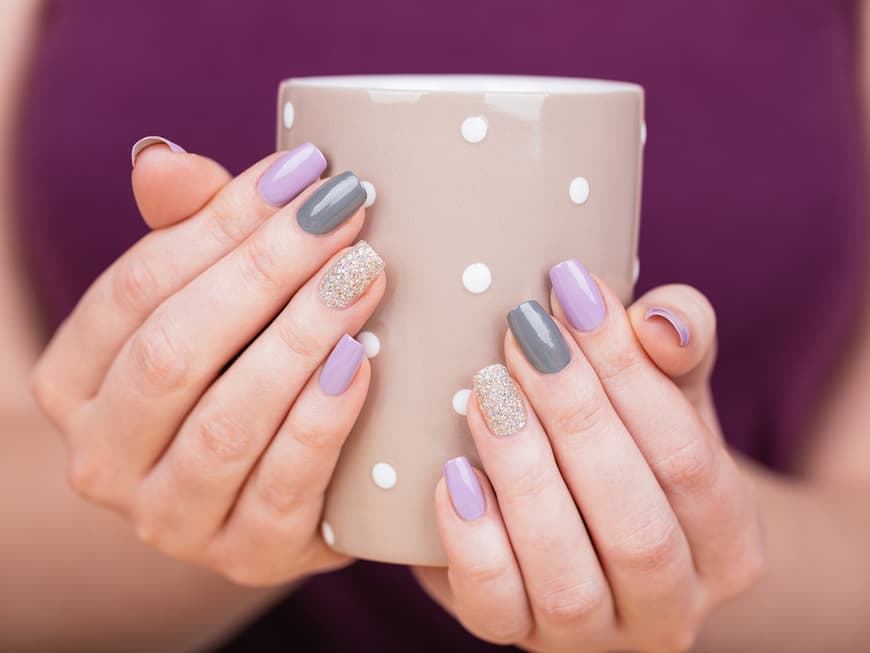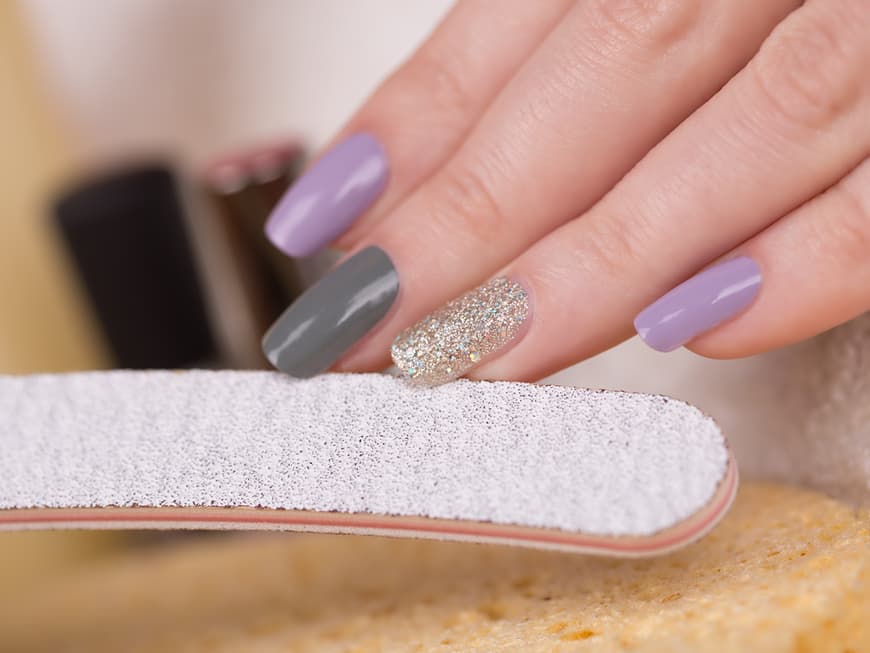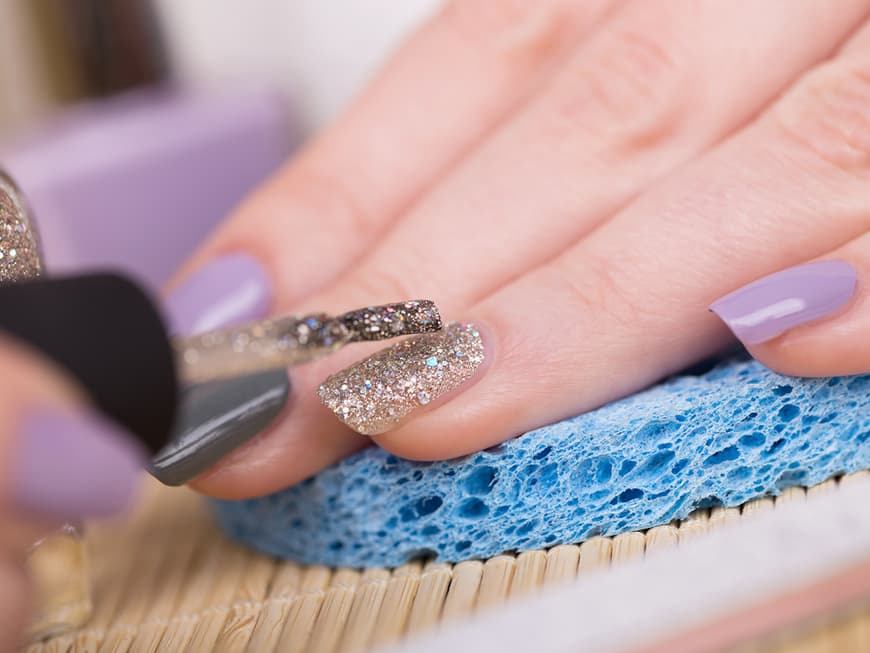File nails correctly
The number one rule here is: never use a metal nail file. This tears the nail structure and can cause the nails to break more quickly. It is best to use a nail-friendly glass file. For brittle, splintering nails, use a sandpaper file (drugstore) - and always file in one direction only, never back and forth, as this damages the nail. By the way: Wide nails look narrower if they are filed into a pointed oval.
Preparing nails
Step 2 of the manicure instructions for well-groomed nails is preparation, which is often neglected. Don't go after the cuticles with scissors (this can lead to inflammation), but first apply some cuticle remover, wait a little and then gently push them back with a rosewood stick. In addition to learning how to apply polish, a great manicure also includes caring for the nail bed. Apply nail oil or butter regularly, preferably just before going to bed, so that it can work its magic overnight.
Polish your nails properly
Do not take a bath beforehand. Nails swell and contract again when they dry. The result? The polish chips off. Before applying, degrease all nails with acetone-free remover, otherwise the formula will not hold. If you have ridges in your nails, use a "ridge filler" as a base coat to ensure an even surface. As a general rule, always apply four coats: base coat, two coats of color and top coat. Wait approx. two minutes in between. PS: Paint the thumb first, as it takes the longest to dry.
Nail polish for those in a hurry
Modern gel textures that harden in daylight last up to ten days and dry extremely quickly (so please do not apply in the evening in front of the TV, otherwise the polish cannot harden 100 percent!) Never breathe on painted nails, the moisture in the breath only keeps the polish soft for longer. It is best to use a quick-drying spray.
Well-groomed nails need a break
Constant painting can be quite hard on nails. That's why you should give them a little "rest" from time to time. Care polishes with ingredients such as hyaluronic acid (moisture) or silicon (strength) are just the thing. If you are prone to brittle nails, you can also strengthen them by taking nutritional supplements. However, you need to be patient here: It can take up to three months to see the first results.
Paint off: This is how it works!
Always remove the nail polish from the nail bed to the tip of the nail, otherwise residue could get under the nail bed. Apply acetone-free remover to a cotton pad, press on briefly and then wait a moment - this usually allows the dissolved texture to be removed in one go. If there are still stubborn residues in the gaps (often happens with dark shades such as Bordeaux), use a remover pen, which can get into all corners with its precise tip.
Tips and tricks
Correct storage: After use, clean the thread of the nail polish bottle and twist the cap tightly. Hold sticky polish caps under hot running water to make them easy to open again. The idea of storing mini bottles in the fridge is counterproductive. A texture that is too cold does not apply well and flakes off more quickly. Nail polish that is too hot, for example when left outside at the height of summer, can blister. It is therefore best to store in a cool, dry place.
Mixing nail polishes: Is that allowed? Yes, but you should stick to one brand. If you have several half-used bottles at home, it can be fun to get creative and develop your own shades. There are no limits to your imagination. Get started!
Is paint harmful? No! Modern products protect the nail from drying out and cleaning agents. The claim that nails cannot breathe under a coat of polish is simply wrong. They are made of lifeless horn and do not breathe anyway.
A small gap should only be left between the cuticle and the polish on the back edge of the nail because the cornification process is not yet complete there.



